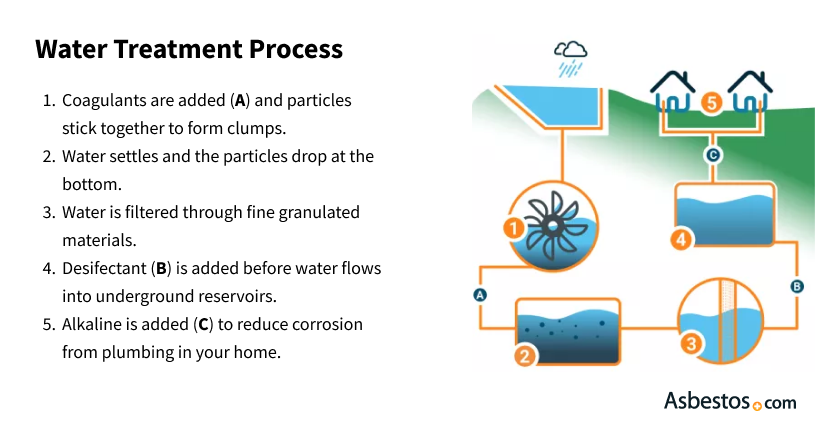Asbestos Removal Things To Know Before You Get This
Table of ContentsThe 3-Minute Rule for Asbestos RemovalThe Single Strategy To Use For Asbestos RemovalThe Only Guide for Asbestos RemovalFascination About Asbestos RemovalAsbestos Removal Fundamentals Explained

In all Type 1 operations, the spread of dust from the workspace need to be controlled by the usage of drop sheets of polyethylene or other appropriate material, or by other measures specified in area 14 of the Guideline. Friable ACM that is not fallen apart, crushed or powdered and that may be disrupted or gotten rid of throughout the work should be completely wetted prior to the work starts and should be kept damp during the work.
In Type 2 operations including the removal of all or part of an incorrect ceiling where ACM is most likely to be on the surface area of the ceiling and the elimination or disruption of one square metre or less of friable ACM, the mechanical ventilation system serving the workspace need to be handicapped and all openings or voids, consisting of ventilation ducts, need to be sealed (Asbestos Removal).
All About Asbestos Removal
Where suitable, the spread of dust should be controlled by measures appropriate to the work, consisting of the use of drop sheets or other appropriate material made from material that is impervious to asbestos In the case of Type 2 operations including work above a false ceiling or work involving the removal or disturbance of one square metre or less of friable ACM, the workspace need to likewise be surrounded by an enclosure made of polyethylene or other suitable material impervious to asbestos, where practicable.
Glove bags serve to control asbestos dust and waste at the source by containing the wetted ACM throughout the removal and by containing the waste - Asbestos Removal. Surfaces listed below a glove bag operation need to also be covered with a drop sheet. Source: Construction Security Association of Ontario The Guideline requires that, prior to ACM is gotten rid of inside, the work location must be enclosed and a decontamination facility established, as described previously.
The friable ACM needs to be thoroughly moistened and kept damp throughout the elimination, unless this would develop a danger or trigger damage. Dust and waste must also be kept damp if practicable. The Policy requires that a competent employee examine the work location at the start of each shift, at the end of each shift, site web unless the next shift begins right away, and a minimum of once on days when there are no shifts.
The Buzz on Asbestos Removal
In some Type 3 operations, unless the building will be demolished and will just be entered by asbestos reduction and demolition workers, the spread of dust from the work location must be avoided by keeping a negative air pressure of 0. 02 inches of water relative to the area outside the work area.
The pressure difference should be determined often and at routine periods and the ventilation system used to maintain the unfavorable atmospheric pressure should be checked and maintained by a proficient employee prior to each use. Replacement air drawn from outside the enclosed area needs to not be infected with any hazardous dust, vapour, smoke fume, mist or gas.
If, throughout the course of the inspection, the filter is discovered to be damaged or faulty, it must be replaced before the ventilation system is utilized. The ventilation system that is used to keep the enclosed area at negative pressure must be examined and preserved regularly by a "proficient employee" before each usage.
Rumored Buzz on Asbestos Removal

If the enclosure is torn, air will leakage into, rather than out of the work location. This minimizes the danger of asbestos contamination outside of the enclosure. The concentration of airborne fibers in the workspace will be minimized as polluted air is filtered and exhausted. The blood circulation of fresh air through the workspace might assist to control temperature level and relative humidity inside the enclosure, possibly improving worker comfort and decreasing the risk of excessive exposure to heat inside the enclosure. Type 3 operations anchor that are done on non-friable ACM utilizing power tools that are not connected to a dust-collector geared up with a HEPA filter must be carried out in enclosures, unless the work location is confined by walls. If the enclosure is made from non-transparent product, several transparent windows should be contributed to the enclosure so that the entire work area can be seen from outside the enclosure.
Entryways and exits to the workspace should be fitted with plastic sheets on each side. If the work is done inside your home in a structure that will not be demolished, the location inside the enclosure should be kept at an unfavorable atmospheric pressure of 0. 02 inches of water relative to the area outside the enclosure.

Getting The Asbestos Removal To Work
The requirement for clearance air screening at the end of indoor Type 3 operations involving the elimination of ACM that is explained in paragraphs 1, 2, 3, 4, and 6 of subsection 12( 4) makes sure that workers who get in the area following the elimination are not exposed to asbestos fibres. Type 1 operations need controlling the spread of dust through appropriate procedures including the usage of drop sheets that are resistant to asbestos.